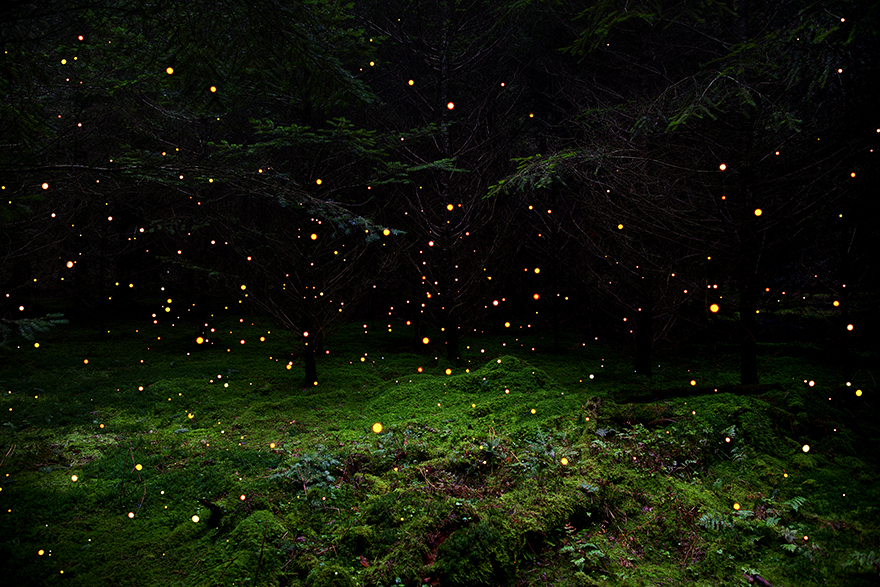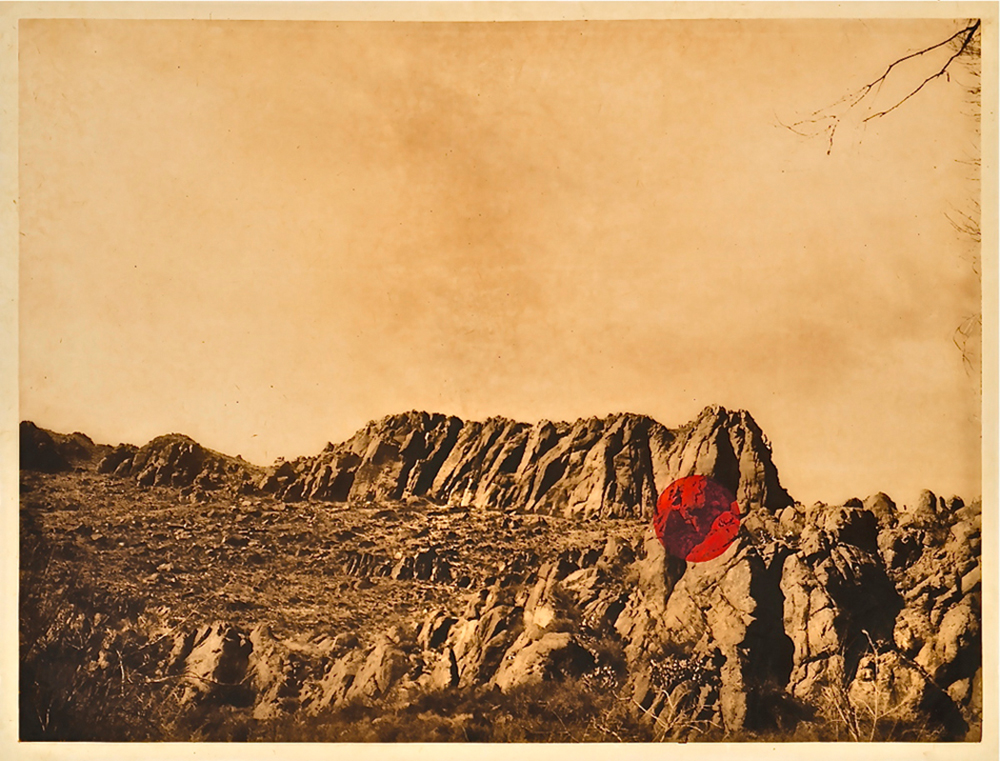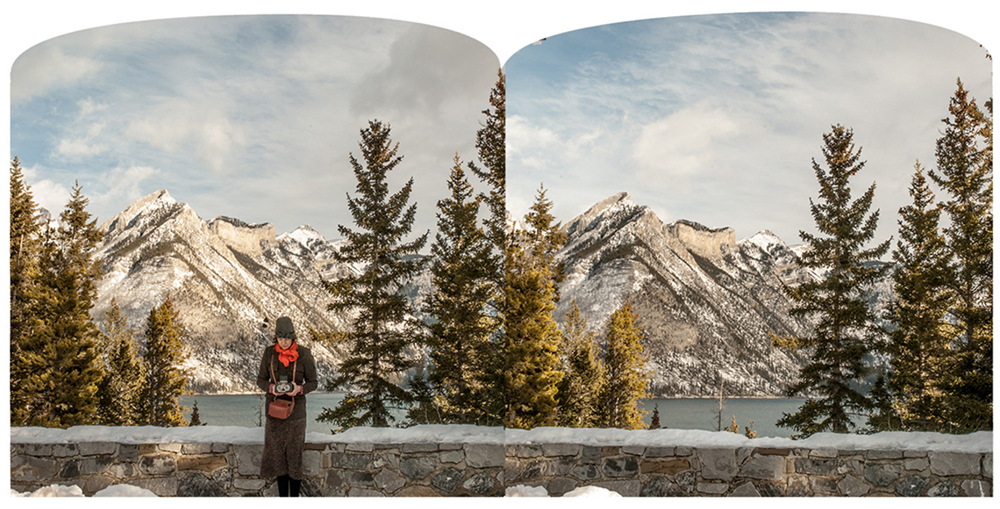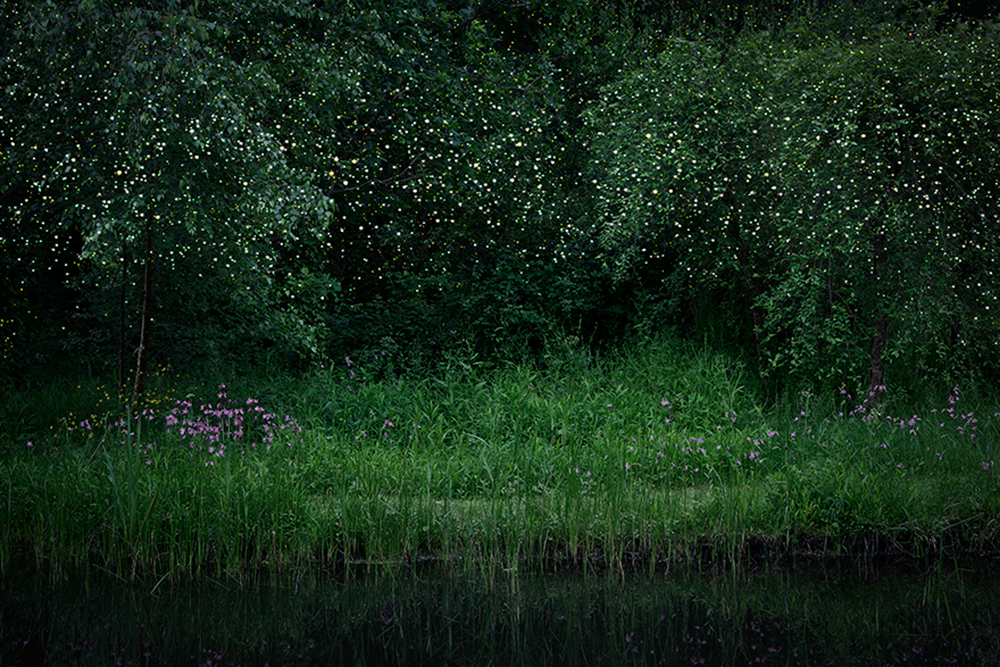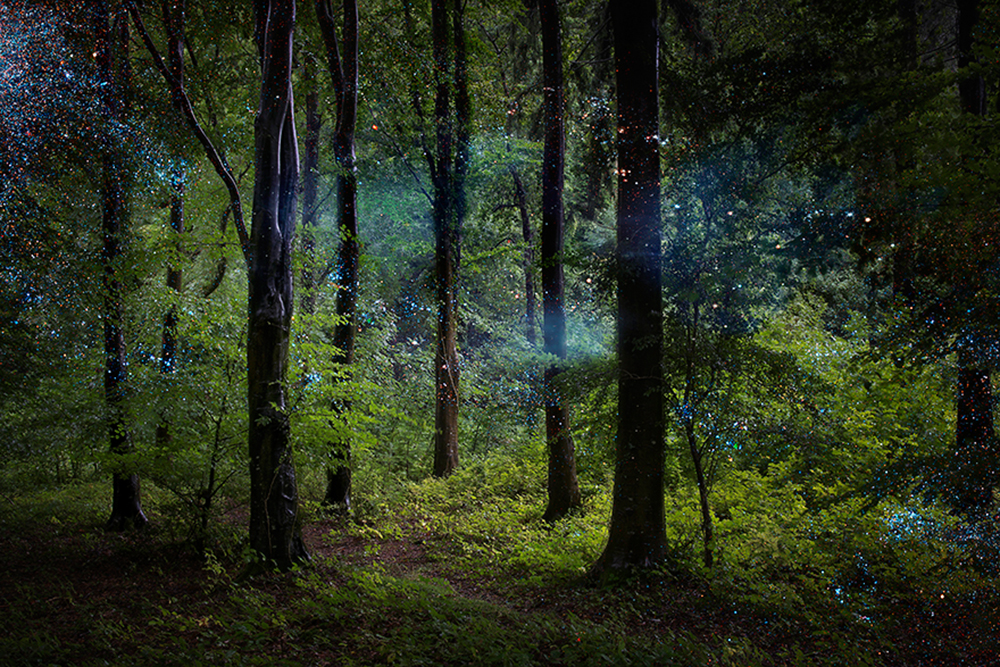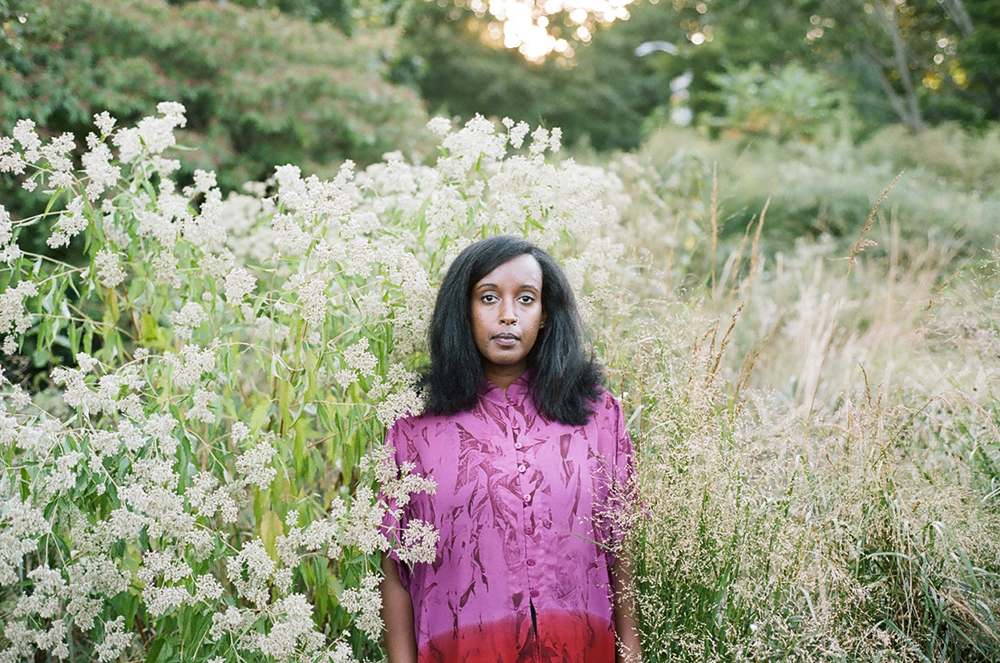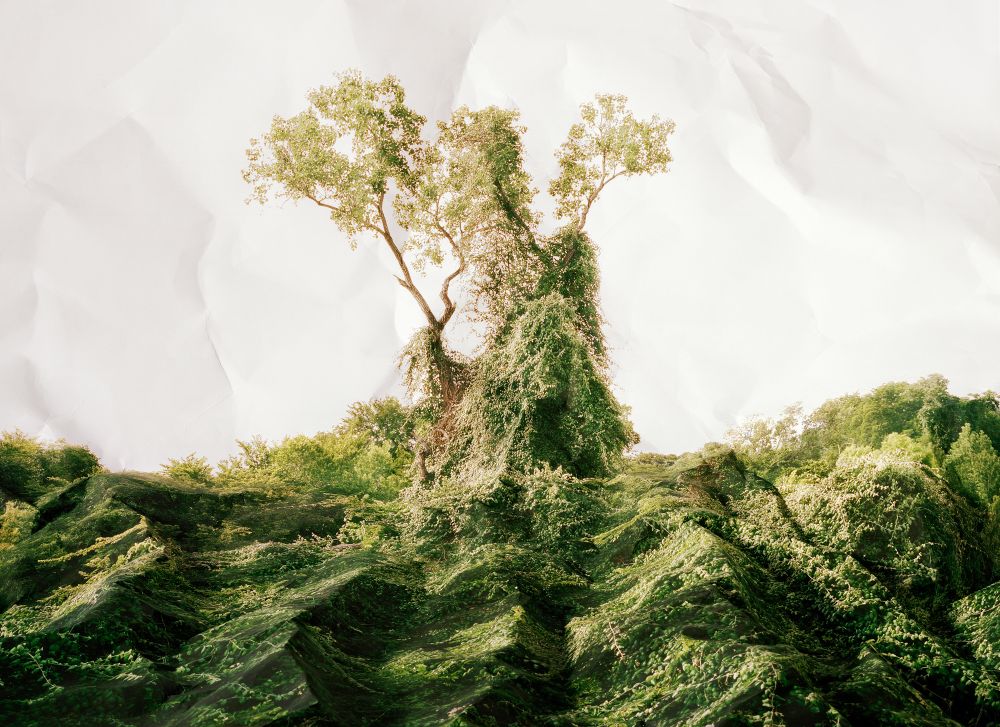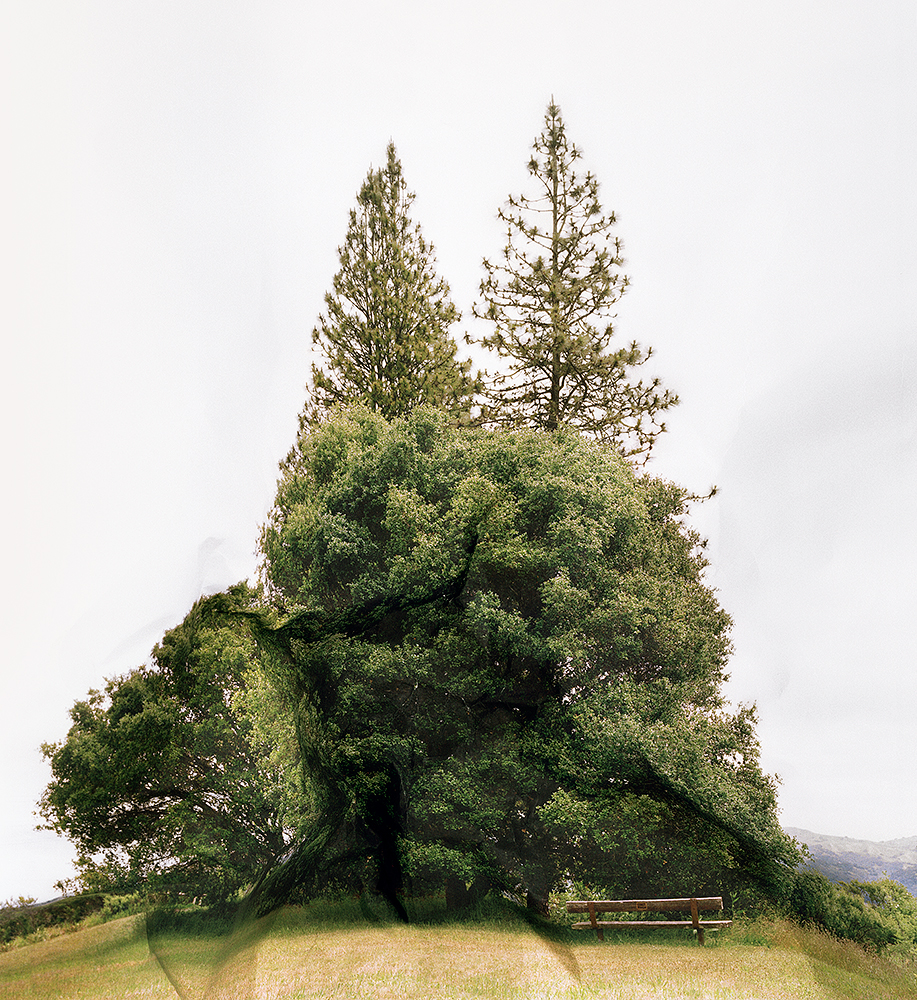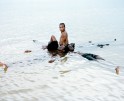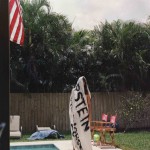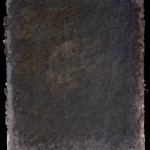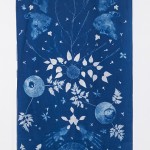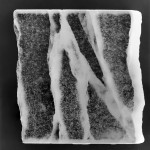Her Feet Planted Firmly on the Ground at the Houston Center for Photography
In honor of International Women’s Day on March 8th, we are celebrating a week of women’s photography starting with a new exhibition at the Houston Center for Photography, Her Feet Planted Firmly on the Ground, running through May 7th, 2017. The exhibition curated by Caroline Docwra, highlights the photographs of Christa Blackwood (Austin, TX), Susi Brister (Dallas, TX), Jennifer Crane (Saskatoon, SK) Ellie Davies (Wareham, UK), Naima Green(Brooklyn, NY), and Laura Plageman (Oakland, CA). The show celebrates new feminine considerations of landscape photography by women who manipulate the genre with unique perspectives and leave behind traces of themselves and emphasize the importance of self-representation.
Christa Blackwood’s series Naked Lady: A Dot Red questions why the nude is almost exclusively female. Her experiences as a working female photographer led her to this question, and her images attempt to shift the paradigm of what is significant in images of women. “So much emphasis is placed on women’s physicality. I am more interested in images of women that focus on what they actually do: their accomplishments, skills, and intellect,” Blackwood writes. This body of work places a red dot in landscapes that depict iconic views as a stand-in for the nude female figure in the landscape.
Susi Brister’s landscapes in her series Fantastic Habitat depict anonymous figures covered in densely textured or patterned textiles inserted into various landscapes as mysterious organic forms. This mix of natural and unnatural produces a bizarre visual and contextual relationship between the shrouded form and its environment, at times creating a landscape-within-landscape effect. Throughout this work, Brister questions the nature of sculpture, performances, and portraiture, and challenges traditional photographic renderings of the female figure in the landscape.
Jennifer Crane’s series of photographs titled Her Fears / Her Dreams presents stereographic images based on a historical view of western Canada in the photographic archives of William Notman. Her stereographs engage the viewer in an interactive and intimate experience of the Canadian landscape re-narrated through the contemporary imagination. The gallery visitor may view each card in the set with an antique viewer. How each person perceives each image with the stereo viewer may depend on their depth perception, their interpretation of the images, and how they negotiate the technology of the images, and how they negotiate the technology of the viewer. In this way, Crane emphasizes the diversity of viewers’ experiences within a single landscape.
Ellie Davies’ series Stars explores her desire to find balance between a relationship with the wild places of her youth, and a pervasive sense of disconnectedness with the natural world. By overlaying images of galaxies with mature and ancient forest landscapes, she offers viewers space to discover and explores this distance. Through an exploration of her own childhood, this series considers the fragility of our relationship with the natural world, and the temporal and finite nature of landscape as a human construct.
Naima Green’s series Jewels from the Hinterland, reflects on the representation of the black body throughout the history of photography. Historically rendered in desolate, concrete spaces, Green instead photographs portraits of friends outdoors in New York City, where figures anchor fields clear-cut with geometric lines and vibrant colors. These photographs depict city dwellers who identify with natural green spaces, regions that black urbanite women are not expected to inhabit.
Laura Plageman’s series Response: Land feature images that are responses to photographs as both representations and tangible objects. Playing with paper and with light in unplanned and organic ways, Plageman looks for new ways to perceive the space, form, and context of her subjects. In some works, large pieces of the original image are torn out while in others, smaller parts are more subtly altered. While they may appear illusory, the resulting pictures are documents of actual events and are thus as authentic as the original representational images contained within. She forces her perspective on the viewer and physically alters the photograph to display how she thinks the landscape should be viewed.
Posts on Lenscratch may not be reproduced without the permission of the Lenscratch staff and the photographer.
Recommended
-
Arnold Newman Prize: C. Rose Smith: Scenes of Self: Redressing PatriarchyNovember 24th, 2025
-
The Aline Smithson Next Generation Award: Emilene OrozcoNovember 21st, 2025
-
MATERNAL LEGACIES: OUR MOTHERS OURSELVES EXHIBITIONNovember 20th, 2025
-
Josh Aronson: Florida BoysNovember 1st, 2025
-
Robert Rauschenberg at Gemini G.E.LOctober 18th, 2025

